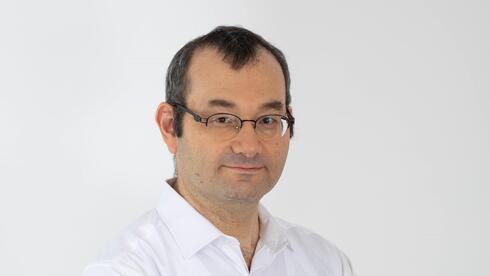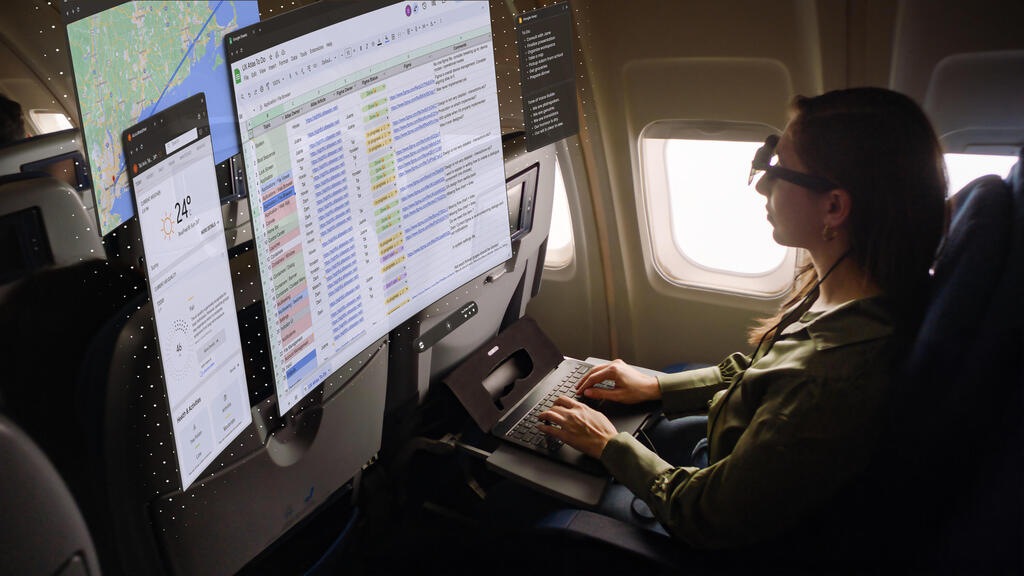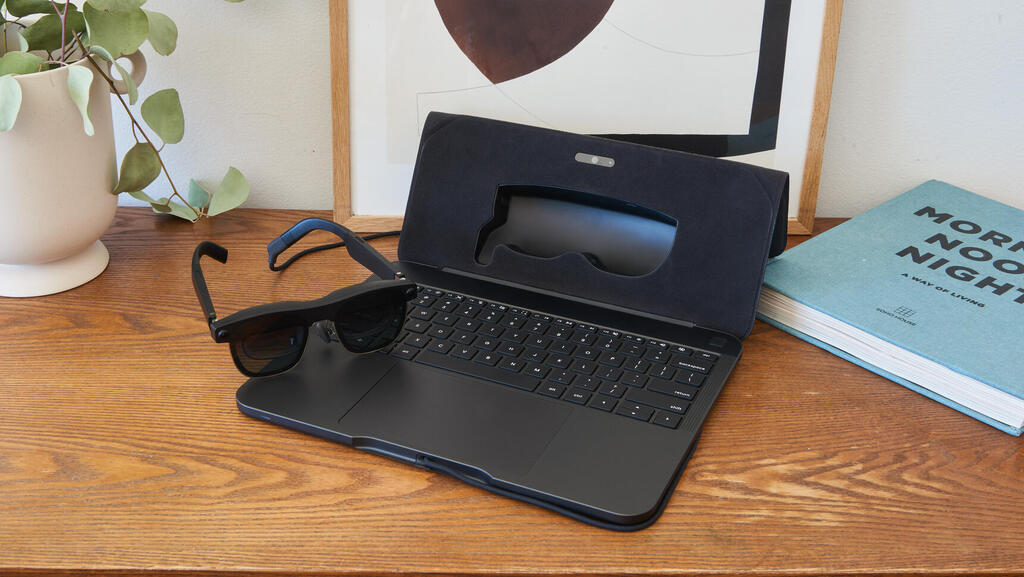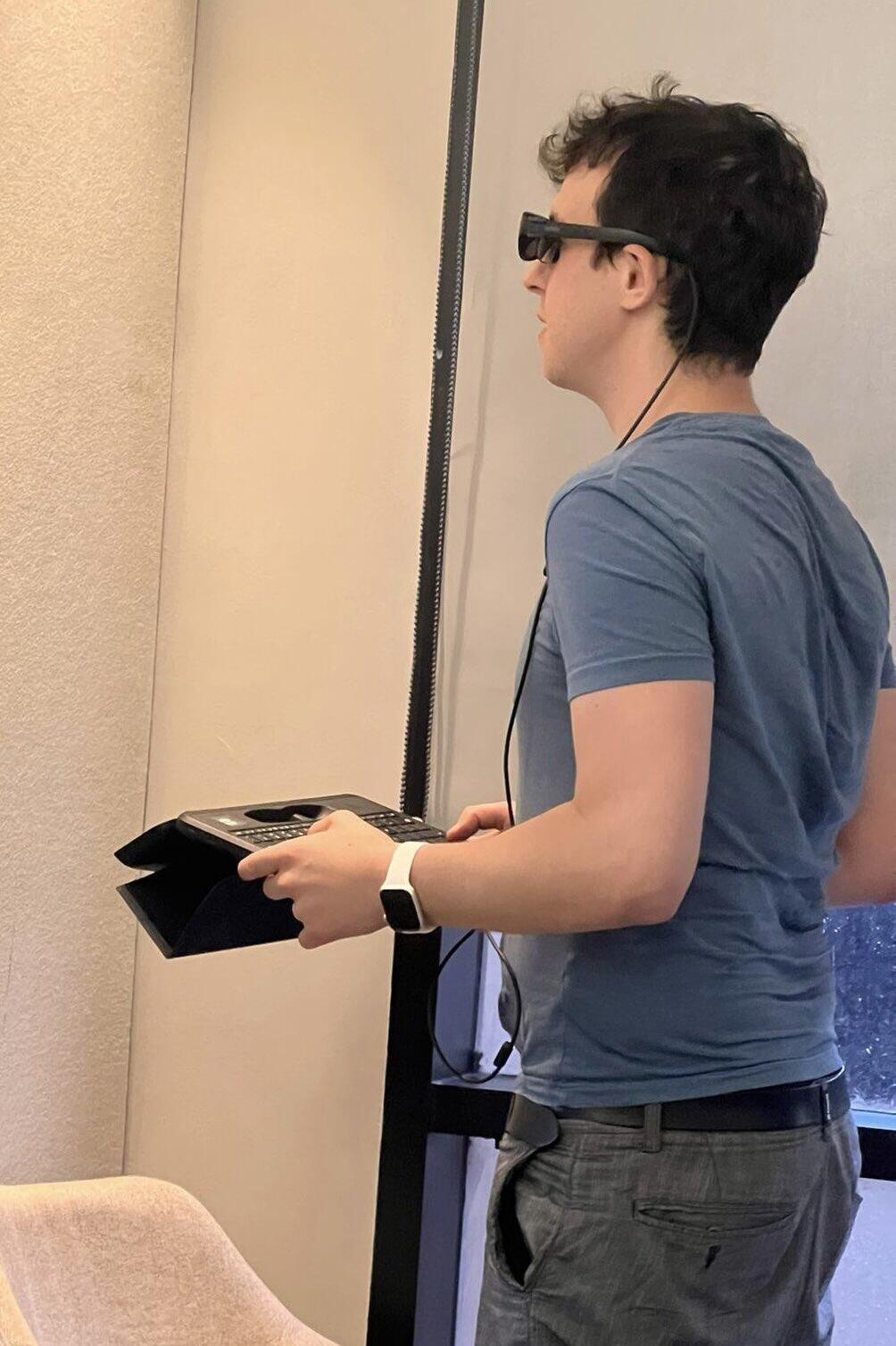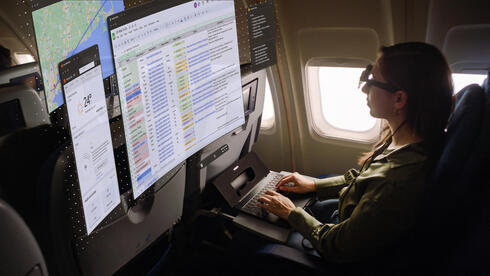
Sightful unveils latest screenless laptop. Is spatial computing finally a reality?
The startup’s Spacetop G1 device offers a 100-inch AR workspace that helps boost productivity for on-the-go workers
Israeli company Sightful has unveiled its Spacetop G1 device, a laptop using spatial computing to offer users an AR ‘monitor’ through the use of glasses. The company, which was ranked 25th on Calcalist’s Most Promising Startups list, will release the device in October for those who wish to work with a large workspace anywhere in the world.
The Spacetop G1 represents what the company believes is a “monumental shift in the laptop market” due to its spatial operation system that helps increase productivity, ensure privacy, and bridge the gap between traditional laptops and more immersive AR devices like Apple’s Vision Pro. It runs its own native SpaceOS based on an Andriod open-source build and can support tools such as Google, Office 365, Zoom, and others.
“We introduced Spacetop to free people from the constraints of time and space, as we don’t believe people should be stuck in 14” screens,” said Tamir Berliner, CEO and Co-Founder of Sightful. “We firmly believe in the power of AR glasses as the first step. Physical reality has always been the limiting factor - bulky, uncomfortable headsets, limited battery and processing power, and a world that is not yet built for daily AR. This is why we are collaborating with world-leading companies to deliver the most delightful product, and what we see as the world’s best laptop.”
The Spacetop G1 has a battery life of 8 hours and was designed through partnerships with Qualcomm, Wistron, and XREAL, all of which helped the company with the hardware and manufacturing of the device. Its glasses, which include magnetic prescription lenses to help those with eyesight issues, deliver a pixel rate of 1920x1080 per eye. They’re connected to the device via a wire but the whole thing is a reasonable size and weight that can be carried in a shoulder bag.
CTech was invited to use the Spacetop to experience firsthand how the device works ahead of its worldwide release at the end of the year. Without any prior instructions from Co-founder and COO Tomer Kahan or Doron Assayas Terre, Spacetop’s Director of Interaction, the device was easily self-applied to our head. There, several windows floated in the air locked in place, boasting Google Docs, YouTube, Microsoft Office tools, or other useful productivity apps that could be easily moved, expanded, or organized.
Unlike Apple’s Vision Pro, the Spacetop is a more modest and simplified engine for those who want to transport their work on the go - not transport themselves into immersive virtual environments completely. Kahan shared that he has been using a form of the device for the last year, prompting “intrigued looks” from people whenever he used it in public settings. “The hardware messages something because there's a keyboard attached, but people know what you're doing,” he told CTech during the demo. “You're not waving your hands.”
This is a key element of the Spacetop that separates it from other AR tools splashing onto the market. Unlike other more famous examples of immersive spatial computing, Sightful is aiming for a more low-key approach. Folks who use the Spacetop don’t want to virtually sit atop a mountain in Montana and watch a TV show floating in the night sky. They don’t want to walk down the street waving their arms and clicking their fingers. Sightful understands that their Spacetop device is for those who are on the go yet still want to experience a large workspace to complete their tasks as they travel. For that, the device truly is the next step in spatial computing with a promising future for those attracted to remote work. The demo ended with this writer confident that it would be his next purchase (for $1900 and a $100 reservation).
This isn’t to say the device is perfect. It isn’t. Spacetop promises a “100-inch” space to work, but the actual field of vision is limited to roughly 52 degrees. This means it can sometimes feel a bit claustrophobic since your periphery is restricted, although the company says this will widen over time. It also has a “dimming function” that blacks out all surrounding environments, which results in the user being unable to see the keyboard. Kahan incorrectly assumed that this writer could touch type on a new laptop, but he also suggested that AI might eventually help with brightening the lenses if the glasses are tilted down.
While the company assured CTech that the device can store things locally, you get the feeling that the Spacetop is best used for people who work primarily on web-based cloud tools such as Google or Microsoft suites or who wish to video call people on Zoom: Perfect for those who wish to continue their work on the go, but it feels unlikely that the Spacetop would ever serve as someone’s primary device - especially those interested in more heavy computing use cases such as gaming or design.
Kahan disagrees, drawing comparisons to the days of the BlackBerry. “We were clicking on a tactile keyboard on a phone and then the smartphone came,” he said. “But it was a transition. Not everyone thought that we could use a keyboard or applications on a smartphone immediately. At some point, they saw that the usability and the value of the smartphone increased and they left the BlackBerry or Nokias behind. And that's the same process we're going to see here… people will start transitioning to this as their sole computer.”
There’s no doubt that this level of technology is inevitable in the future of productivity. iPads found their place among us and wearables are more popular than ever, suggesting that the public will eventually come around even if previous attempts have failed to make wind. Even Vision Pro made a splash but saw high return rates once the initial gimmick got stale. Spacetop isn’t perfect but it represents the ideal combination of familiarity found in our existing devices while teasing the next natural step in the spatial computing journey.
The company was founded in 2020 and currently has more than 60 employees with more than $61 million in funding from Aleph Capital, Corner Ventures, and angel and institutional investors. Berliner was the co-founder of PrimeSense, which was acquired by Apple, and VP and General Manager of Magic Leap Israel. Kahan was an early executive at Magic Leap and N-Trig, which was acquired by Microsoft. Sightful is headquartered in Tel Aviv, Israel, and has offices in Palo Alto, Los Angeles, Taiwan, and Singapore.





